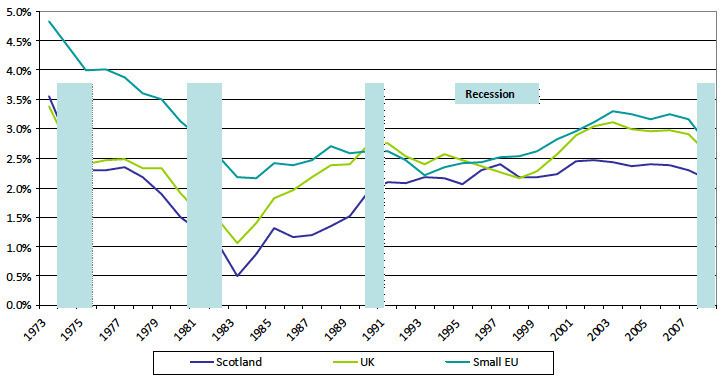 | ||
Rolling recessions describes the continuation of economic situations in which certain sectors of the economy experiences a slowdown or a stagnation including growth itself. On a whole, rolling recession occurs regardless of nationwide or statewide economic recession and the effects may not be in the national economic measures e.g. GDP (Gross Domestic Product).
Contents
- What causes Rolling recession
- What types of recessions are there
- What recessions occurred in the past
- Harsh recessions in 1950
- Boom and Bust Recession
- Balance Sheet Recession
- Negative Impacts of a Balance Sheet
- Depression
- Supply Side Shock Recession
- Negative Impacts of Supply Side Shock Recession
- Different Shaped Recessions
- References
What causes Rolling recession?
What types of recessions are there?
What recessions occurred in the past?
There have been five major recessions that occurred in the 1900s. The specific years were as follows;
"1991 was financially the hardest year to overcome"
"During the year of 1990's recession struck by 2.2% increasing nearly 1% from 1974 and 1991"
"Through the year of the 1970's oil price shock helped cause larger contractions"
Harsh recessions in 1950+
Boom and Bust Recession
There were recent recession following the recent economic boom taking place in the economic upturn, the economic growth also above, long trend growth rate; this rapid growth has caused inflation.
Balance Sheet Recession
A balance sheet recession happens when companies/banks look over and notice their balance sheet has occurred an error. This is usually caused by a variety of losses. Banks must stop giving money to clients for a short period of time, as this can lead to a decrease in fall in investment spending.
For example, in 2008 the banks let losses fall, with a decline of money leading in bank liquidity banks in general found it hard to borrow money to keep their business intact, it was hard for banks to find ways of borrowing money for investment due to their previous records, this led to the economy falling into recession despite there being APR.
Negative Impacts of a Balance Sheet
Depression
Depression can lead to a high increase of unemployment. It is more likely a balance sheet recession can cause depression. Due to falling asset prices and bank losses, this has a large impact on economic activity.
Recession is common in many countries; it is all part of the business cycle. Depression means there is a fall in economic activity lasting for a number of years. Economists will not agree with depression as they believe it is plagued by declining economic activity However, there are other economists that argue depression continues up until the point that the activity has returned to its original state.
Supply Side Shock Recession
As oil prices are increasing, it can cause recession due to the decline in living standards. In this day, there is a high demand of oil, oil has increased in price throughout the years hence the demand for it.
